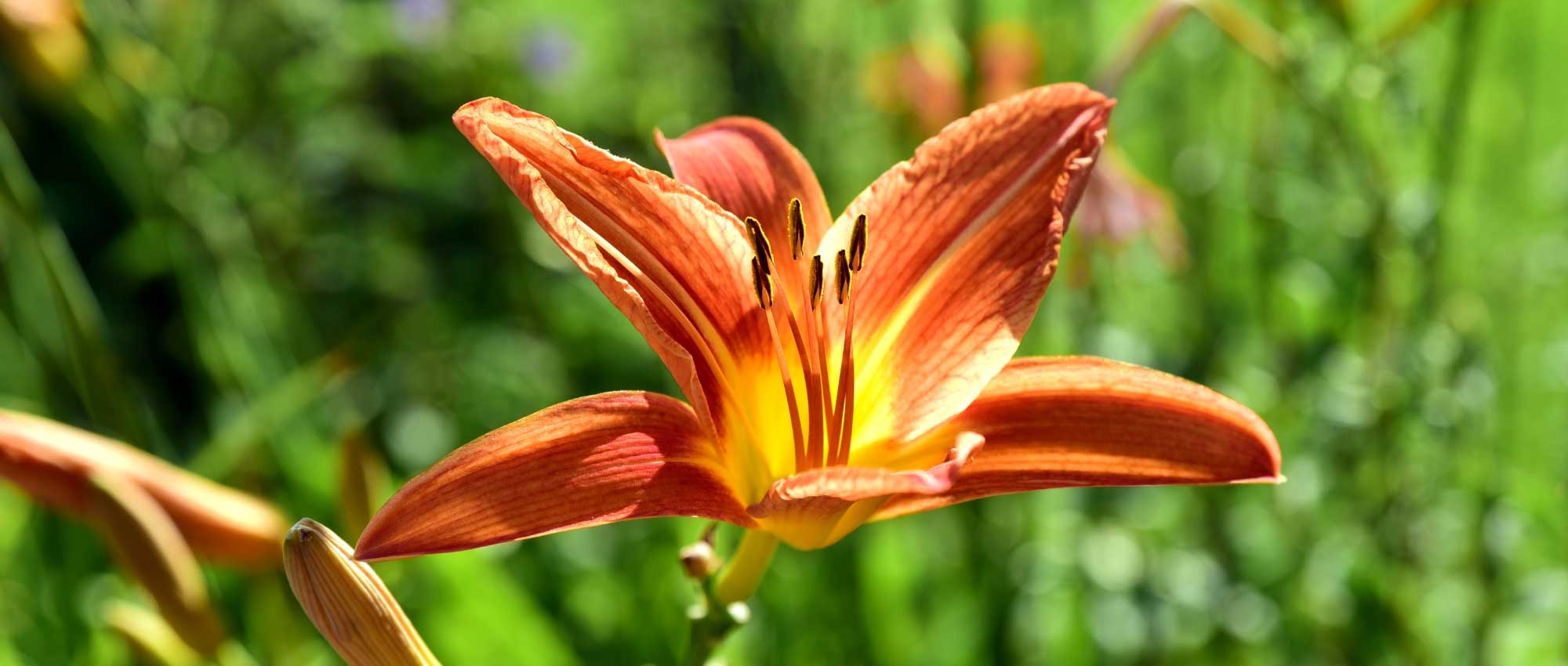
20 durable, very long-lived perennial plants
Our selection for sustainable gardening!
Contents
Unlike annuals or biennials, perennials are plants that remain in the garden for many years. However, even among perennials, not all last as long: some last three or four years, then lose vigour, degenerate, forcing you to replace them… Others, by contrast, can remain in place for more than ten years without losing their splendour. Among these plants, some take a long time to become established. You need to be patient at the start; then, after a few years, these plants really thicken out and begin to offer very generous flowering! Some thicken over time, forming increasingly large colonies. Long-lived perennials will reduce garden maintenance and cost… They stay in place, offering flowers year after year!
Bear in mind, however, that longevity also depends on growing conditions. Plant them in a spot suited to them: sun or shade, dry or cool soil, poor or rich, etc. A plant will live much longer if grown in good conditions!
Daylilies
Also called « Lis d’un jour », daylilies impress with their large, very elegant, often orange flowers. Their warm hues are much appreciated. They flower in summer, offering flowers made of six tepals, reminiscent of lilies. Each flower lasts only a day, but they follow one another continuously. Daylilies form beautiful, large clumps of leaves. They are easy-to-grow plants that thrive in sun. They can live for more than 20 years.
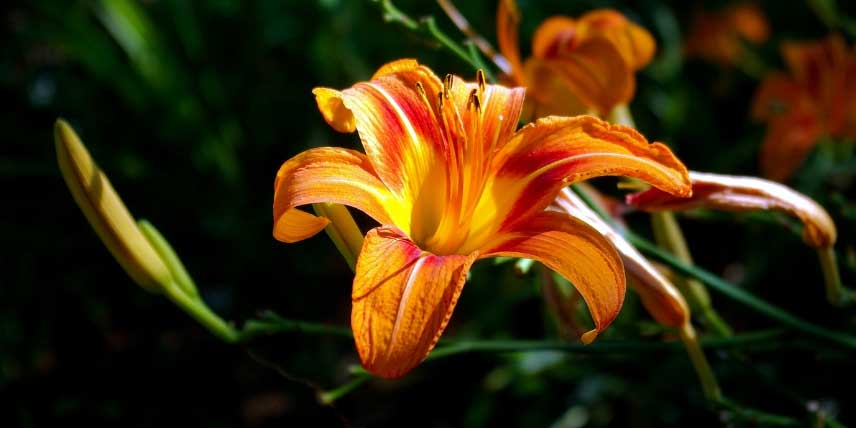
Read also
How to stake a perennial plant?Hostas
Hostas are prized for their large, broad leaves, often variegated and capable of taking a range of colours, depending on variety. They can be green, bluish, margined with yellow-green, cream-white, or grey. Hostas are woodland plants, growing mainly in shade or partial shade, on fairly cool soils. Although mainly valued for their foliage, some varieties offer very decorative flowering! If leaves are not eaten by slugs, their lifespan can easily exceed 20 years.
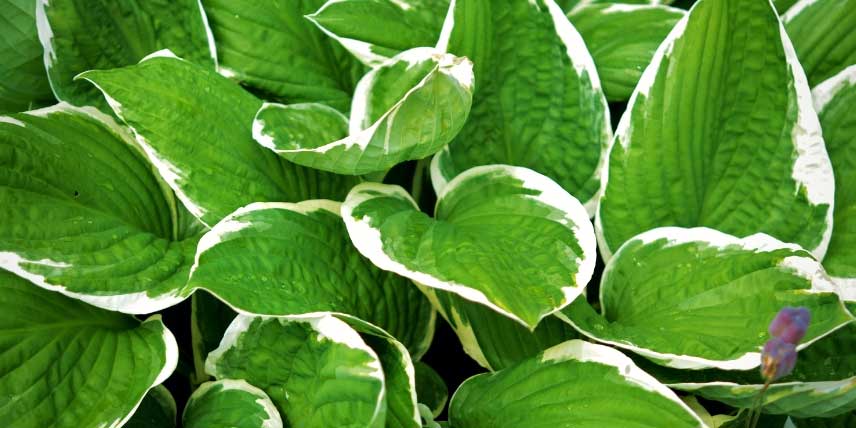
Discover other Perennials by variety
View all →Available in 1 sizes
Available in 1 sizes
Available in 1 sizes
Available in 1 sizes
Available in 1 sizes
Available in 1 sizes
Available in 2 sizes
Available in 1 sizes
Available in 1 sizes
Available in 1 sizes
Peonies
Peonies produce large, very romantic flowers in spring, often a soft pink. Flowers can be single or double, depending on number of petals. Peonies can be herbaceous or shrubby. They need time to establish, often taking several years before producing first flowers, but once established, they last a long time and can live for more than 30 years in some gardens!
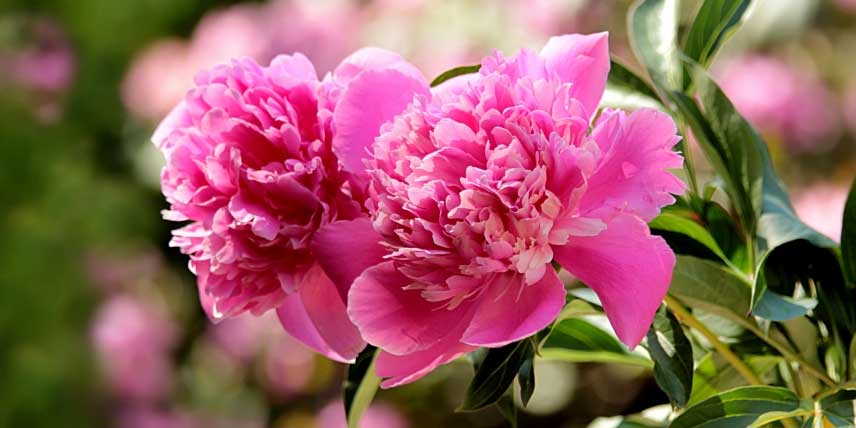
Solomon's Seal
Solomon’s seal, or Polygonatum, produces arched stems bearing ovate, very regular foliage, of a beautiful green colour (but some varieties have handsome variegated foliage). In spring, small white flowers appear, bell-shaped, hanging beneath stems. It is a shade-loving plant of cool, moist soil, bringing a very natural, wild look to garden! If situation suits it, it can spread and form large colonies for over 20 years.
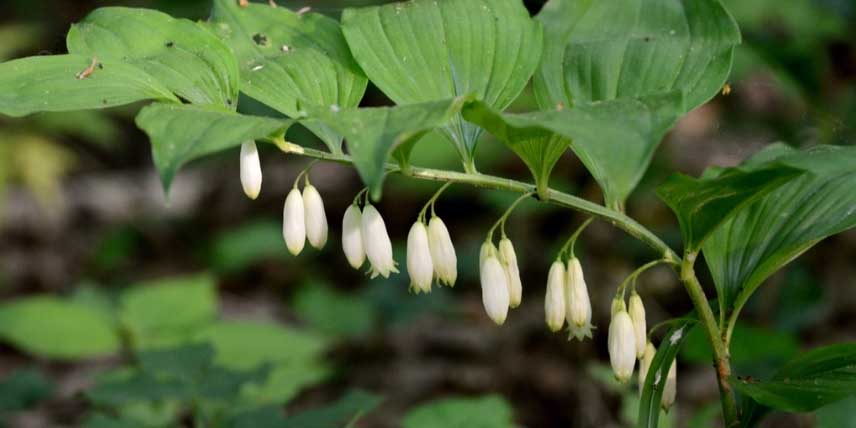
Periwinkles
Periwinkles are plants with a spreading habit, bearing solitary, star-shaped flowers, often blue, but can also be violet or white. There are two main species: greater periwinkle, Vinca major, and lesser periwinkle, Vinca minor. Their leaves are simple, opposite, and generally dark green, although some varieties have variegated foliage. Periwinkles make superb groundcovers, to plant in understorey or at base of trees and bushes. They are very easy-to-grow plants that multiply and spread by stolons (like strawberries); as such they can live for more than 20 years in garden but not in same place.
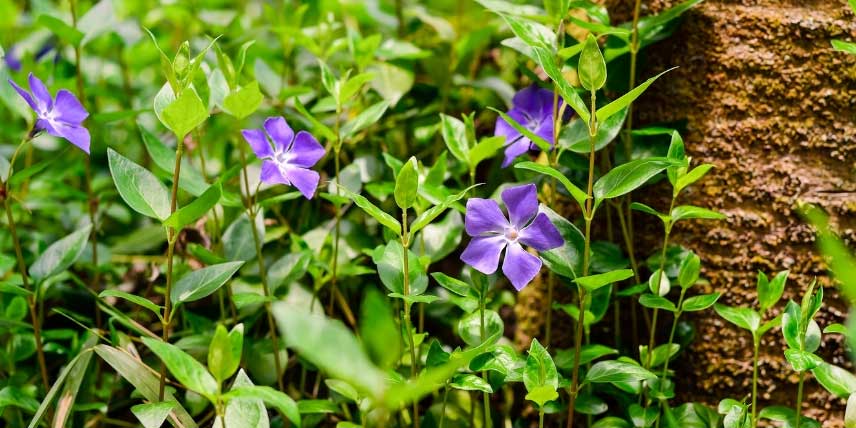
Aruncus
Aruncus dioicus, or Goat’s beard, enchants with its white, airy summer flowering, which opens into large panicles. It also has superb, deeply divided foliage, creating a rather lush effect. Leaves are large and divided into lanceolate leaflets. It thrives in partly shaded positions, on rich, moist soils. It is perfect in an understorey garden, alongside ferns. It is a perennial whose lifespan exceeds 15 years and which, once mature, forms a large clump that can reach two metres in height.
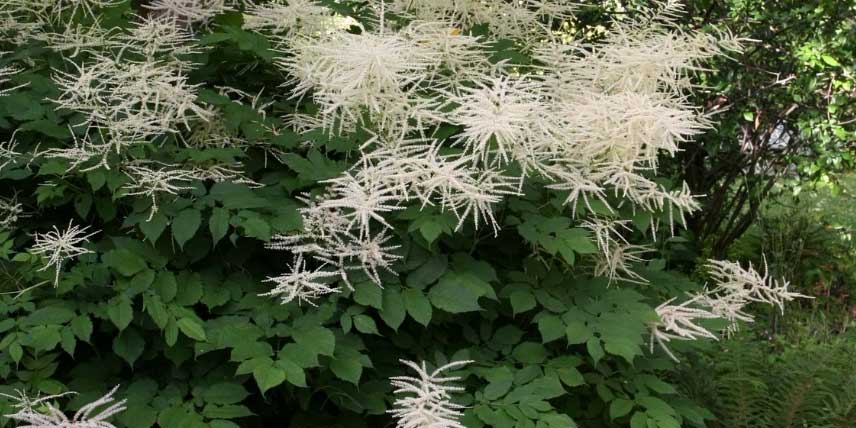
Hardy geraniums
Hardy geraniums (not to be confused with Pelargoniums, often called geraniums) are robust plants that offer long flowering, in fairly soft shades: blue, mauve, pink, white… They make good groundcover and can be grown, depending on variety, in beds, borders, rockeries or in pots. Depending on variety they live 10 to more than 15 years.
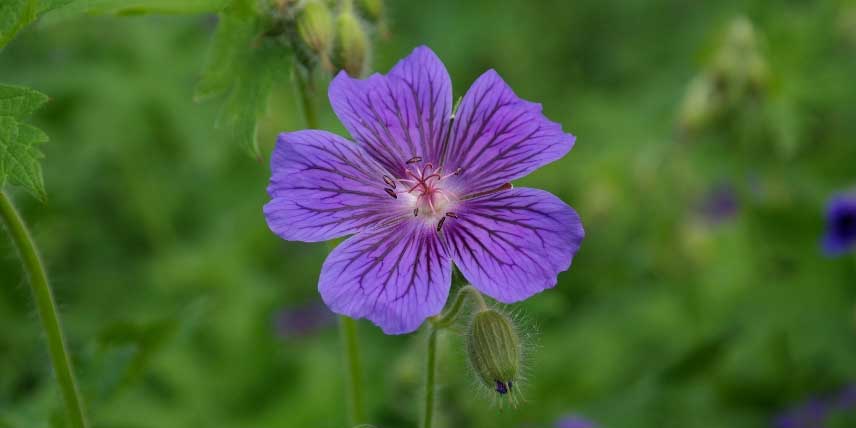
Siberian iris
Les Iris sibirica offrent au printemps de superbes fleurs, souvent bleues, très élégantes. Ils portent de longues feuilles érigées, assez fines. De la touffe de feuilles émergent des tiges florales dressées, qui portent de grandes fleurs bleu foncé, délicatement nuancées de blanc et de jaune. C’est une plante bien rustique, qui se plait dans les terrains frais, voire humides, éventuellement sur les berges des bassins ou points d’eau. Une fois installée, elle peut vivre plus de 20 ans !
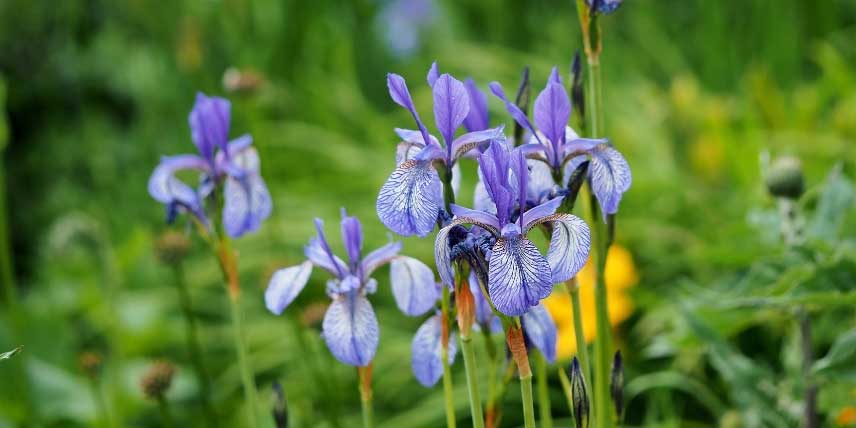
Liatris
Liatris spicata, also called Kansas plume, is a beautiful perennial from the United States. It bears feathery-looking spikes, very soft, made up of flowers often pink-lilac (sometimes white), throughout summer! Spikes, very upright, add a lot of structure to borders! Foliage is also decorative, particularly fine, reminiscent of grasses. Liatris prefers full sun and cool (but well-drained) soil, and is perfect for edging a pond. Once established, it has a lifespan of around 20 years. A plant sadly too rarely grown… that deserves more space in gardens!
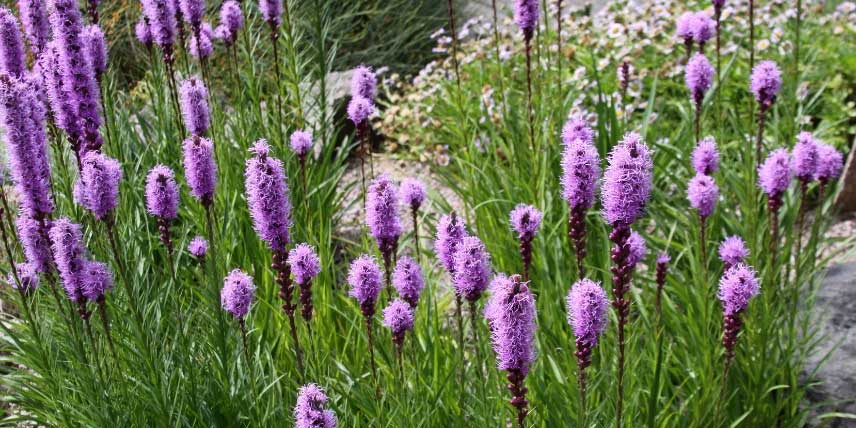
Bergenia
Bergenia, also called “Shoemaker’s plant”, forms a wide tapetum made up of large thick evergreen leaves, rather rounded in shape. It produces in late winter pink, scented flowers gathered in dense clusters. It is a robust, very hardy plant, capable of living for more than 20 years! It thrives in shady conditions and is ideal for edging, but can also be planted in rockeries or at the foot of trees and bushes.
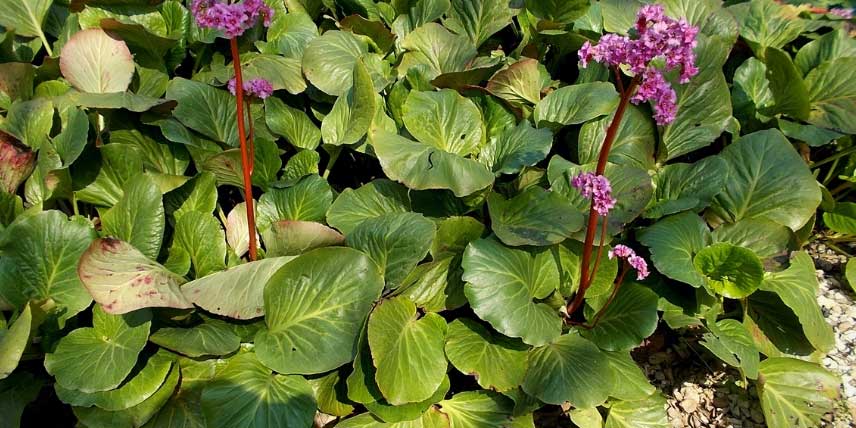
⇒ Bergenia, shoemaker’s plant: planting, cultivation, maintenance
Bellflowers
Bellflowers are appreciated for their bell-shaped or star-shaped flowers, often trailing, in shades of blue, mauve or white. They are easy to grow. For longevity, we particularly recommend the milky bellflower, Campanula lactiflora. These are fairly tall bellflowers, with an upright habit, producing generous spikes of star-shaped flowers. Most popular variety is ‘Loddon Anna’, prized for its very pale pink flowering. Depending on variety, bellflowers can live 10 to 20 years, sometimes longer.
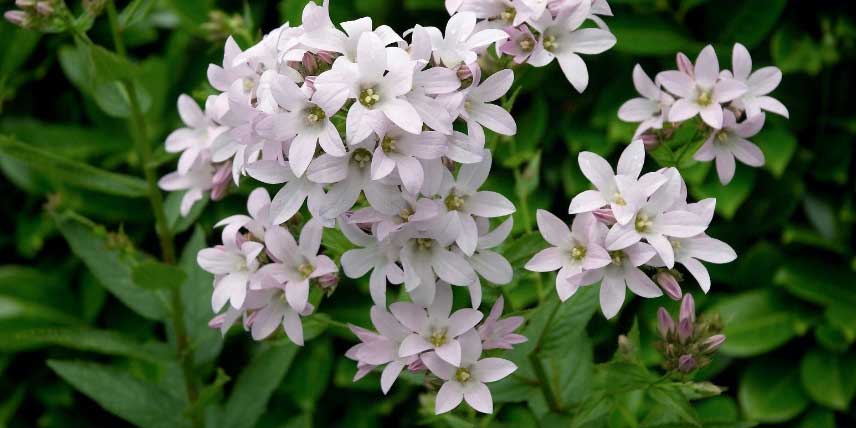
Phlox
Phlox are perennials that offer an abundant display of star-shaped flowers. Their flowers are often pink or mauve, sometimes red, white or blue. There are the large Phlox paniculata, with an erect habit, and the small Phlox subulata, which form tapetums, making excellent groundcover plants. They are robust, fairly easy plants to plant in full sun or partial shade. In good growing conditions, Phlox live for around twenty years.

Miscanthus
Miscanthus, like most ornamental grasses, are plants that live for a long time, sometimes more than 20 years! Miscanthus is also called “Eulalia” or “Chinese silver grass”. It forms large clumps of long, narrow leaves, and in late summer produces beautiful, airy inflorescences, very light, often cream or beige. It likes sun, as well as fresh, fertile soil.
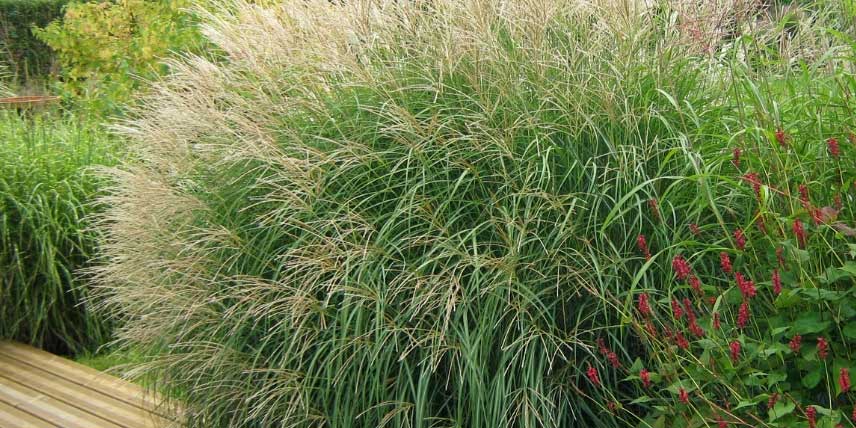
⇒ Miscanthus: planting, growing and maintenance
Dictamnus albus
Also known as Fraxinelle, the Dictamnus produces large clusters of pinkish-white flowers marked with pink veins. It grows naturally in France. It flowers from late spring to early summer. Its flowers have five unequal petals and are scented. It also bears handsome divided dark green leaves. Fraxinelle prefers full sun and poor, well-drained, rather dry soils. It needs time to become well established and does not like to be disturbed, but once in place, it lives for a long time, usually about twenty years!
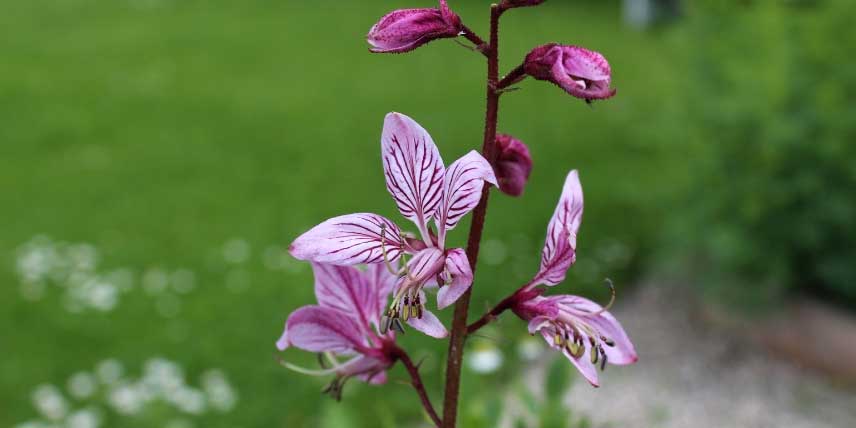
Dicentra spectabilis
Le Bleeding Heart offers very romantic flowering, accompanied by superb foliage. Flowering stems are arching and bear small, pendant hearts that can be pink or white (often bicoloured). It flowers in spring. It thrives in woodland, where you can plant it as a companion to ferns and hostas. Its lifespan is 10 to 15 years.
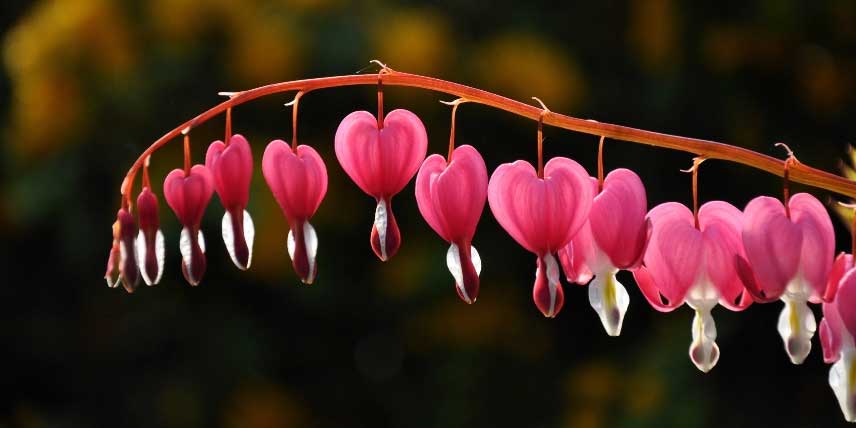
⇒ Bleeding Heart or Dicentra spectabilis: how to plant successfully
Platycodon grandiflorus
Platycodon is a beautiful perennial native to Asia, producing large blue star-shaped flowers in summer (white- or pink-flowering varieties are also available). Flower shape closely resembles that of bellflowers. Before opening, flower buds are swollen and globular. Foliage is deciduous. This plant takes a long time to establish and does not tolerate being moved. Once planted, Platycodon can live for 10 to 15 years.
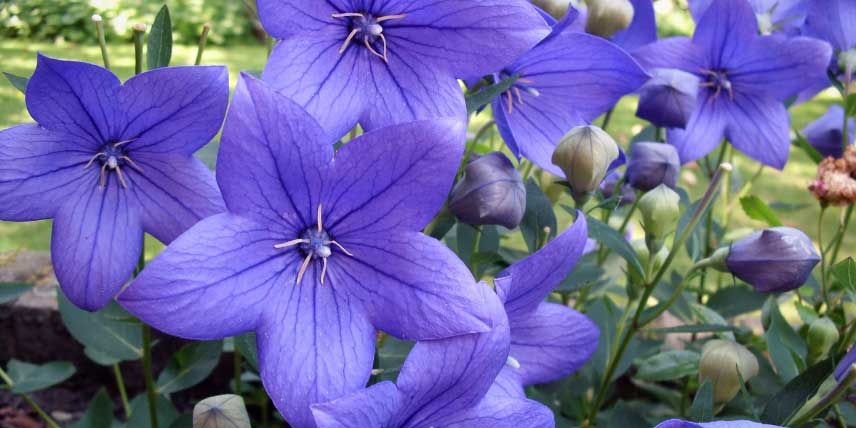
Aconitum napellus
Aconite napel, or Galea of Jupiter, is a perennial that offers a long summer flowering. It bears tall erect flower spikes, somewhat reminiscent of delphiniums. Flowers have a beautiful deep blue colour, and foliage is also decorative, finely divided. Aconite thrives in partial shade, on cool to damp soils. It is a plant that takes a long time to establish but has a lifespan of about 15 years.
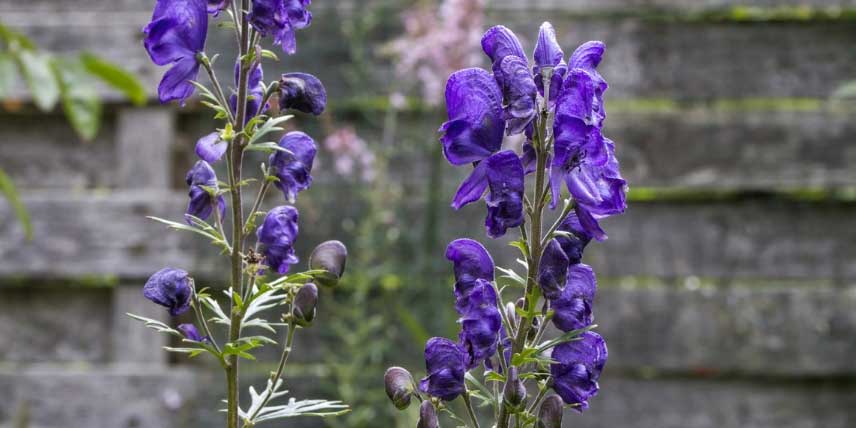
Baptisia australis
Indigo lupin offers long upright spikes composed of usually blue flowers. It is also valued for its attractive foliage divided into three leaflets with a blue tinge. An easy-to-grow plant that requires little and is not particularly susceptible to pests or diseases! It tolerates drought and has a long lifespan of 10 to 15 years. It will thrive in full sun, in well-drained soil.
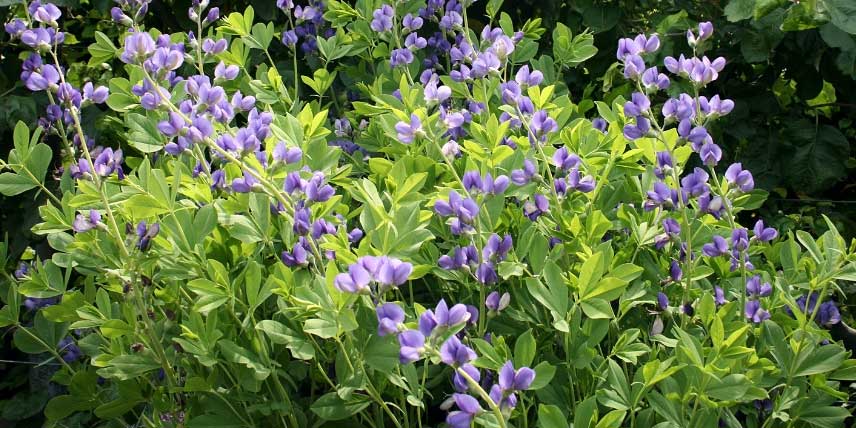
Brunnera macrophylla
Brunnera, or Myosotis of the Caucasus, forms a superb groundcover, perfect for shady corners of the garden! Its foliage is extremely decorative, often a beautiful dark green, but capable of developing lovely silvery-grey variegation. It also produces pretty small blue flowers, very similar to those of Myosotis! It is a reliable, hardy plant, very easy to grow. It prefers cool, humus-rich soil. Once established, it can live for 15 to 20 years.

⇒ Brunnera, Myosotis of the Caucasus: planting, cultivation and care
Epimedium
Sometimes called Flowers of the Elves, epimediums are woodland plants that offer a truly delicate flowering in spring, very light, in soft, luminous shades (yellow, orange, mauve, pinkish-white, beige…). Epimediums also bear decorative foliage, whose colour changes over time. They thrive in cool soils and form superb groundcovers, requiring very little maintenance. Under good growing conditions, they can live for more than 20 years!
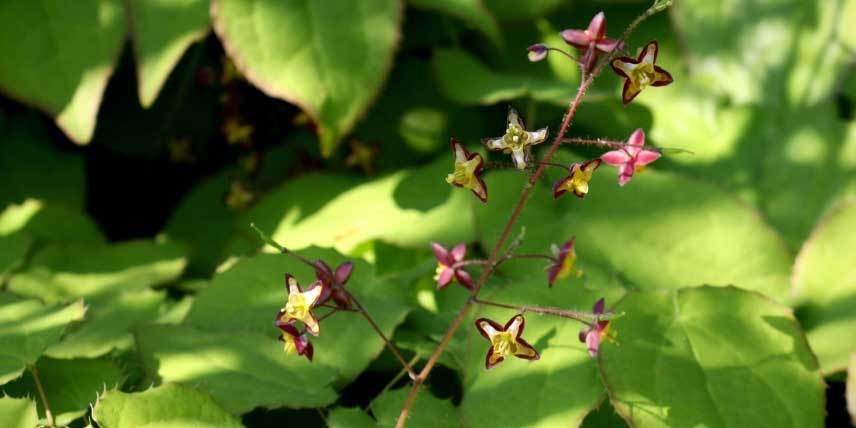
- Subscribe!
- Contents
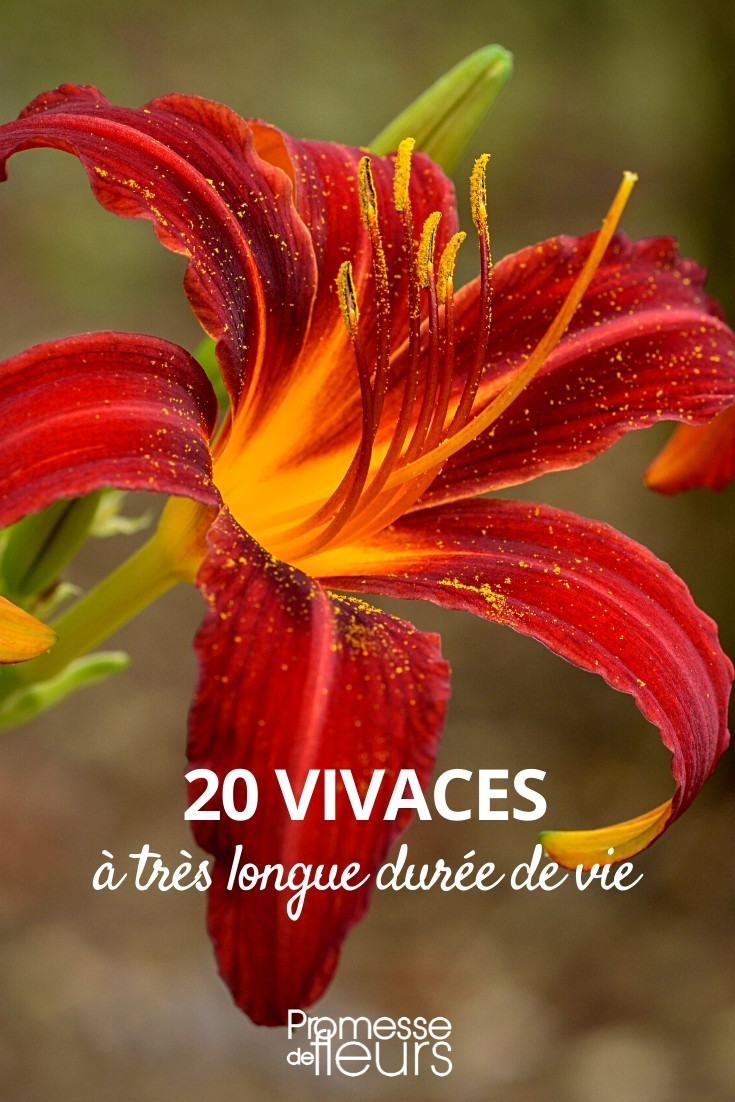































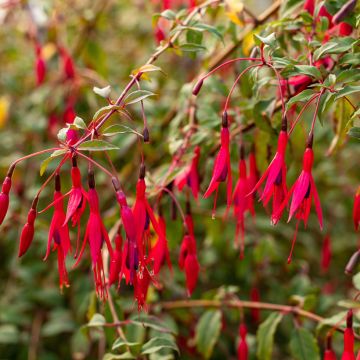
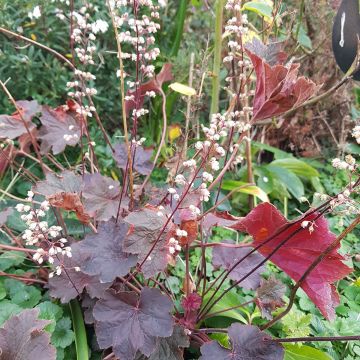
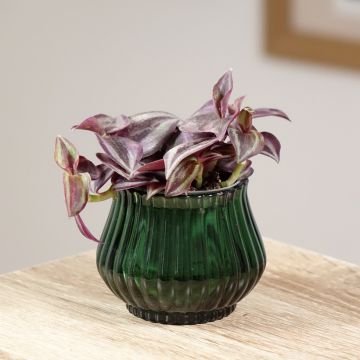
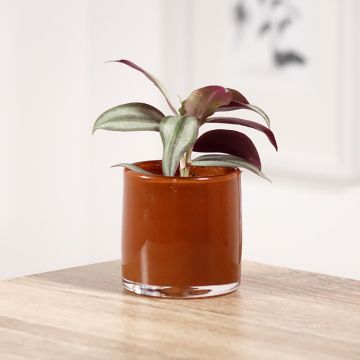
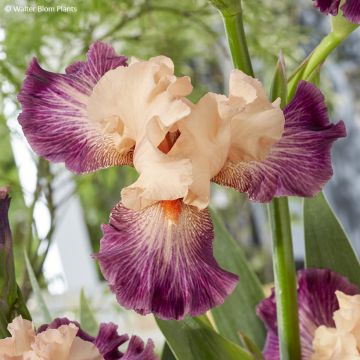
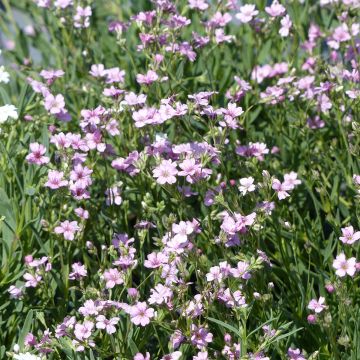
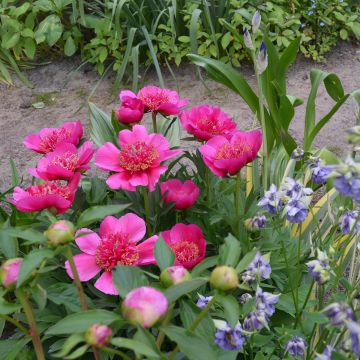
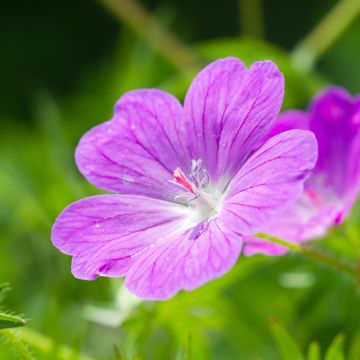
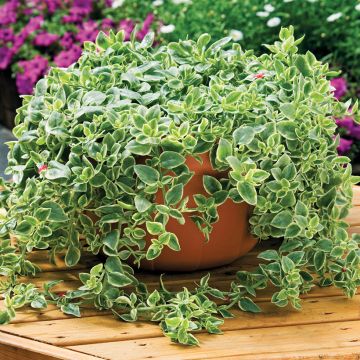
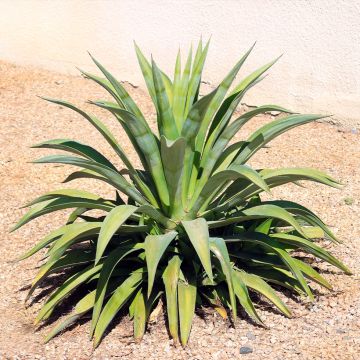
Comments